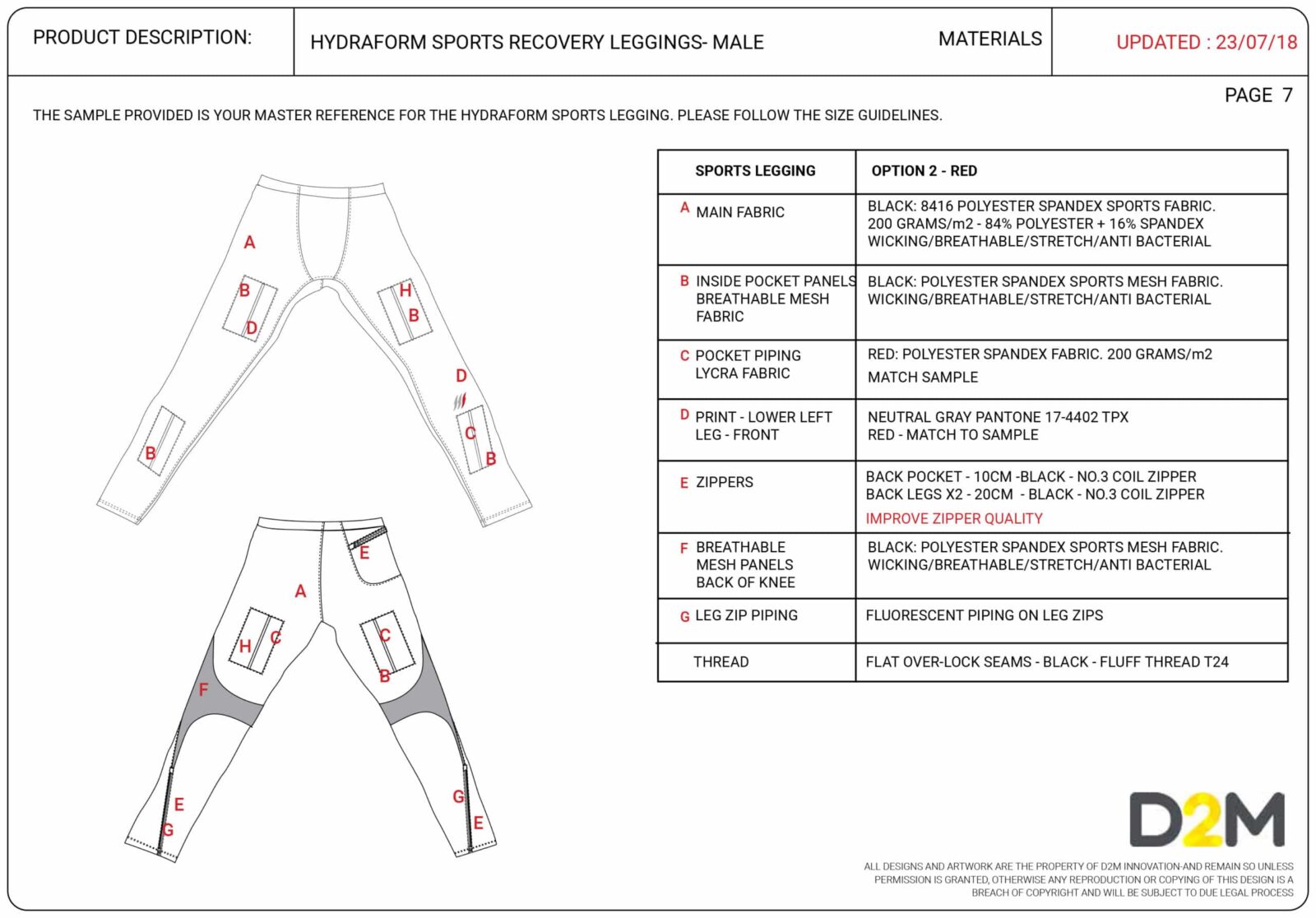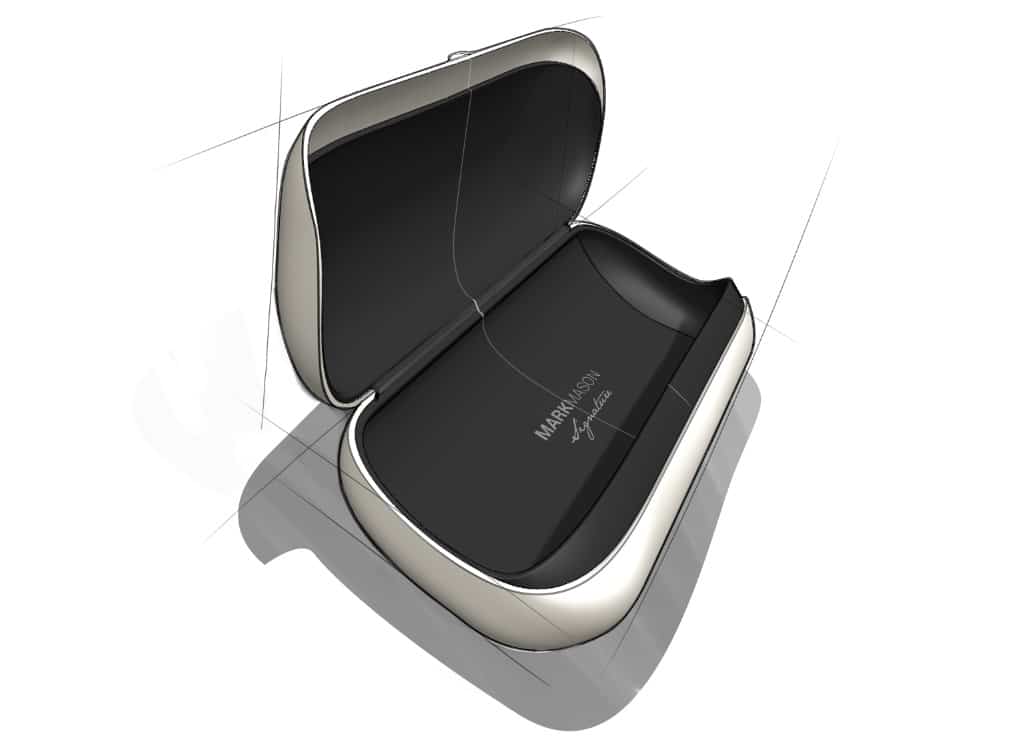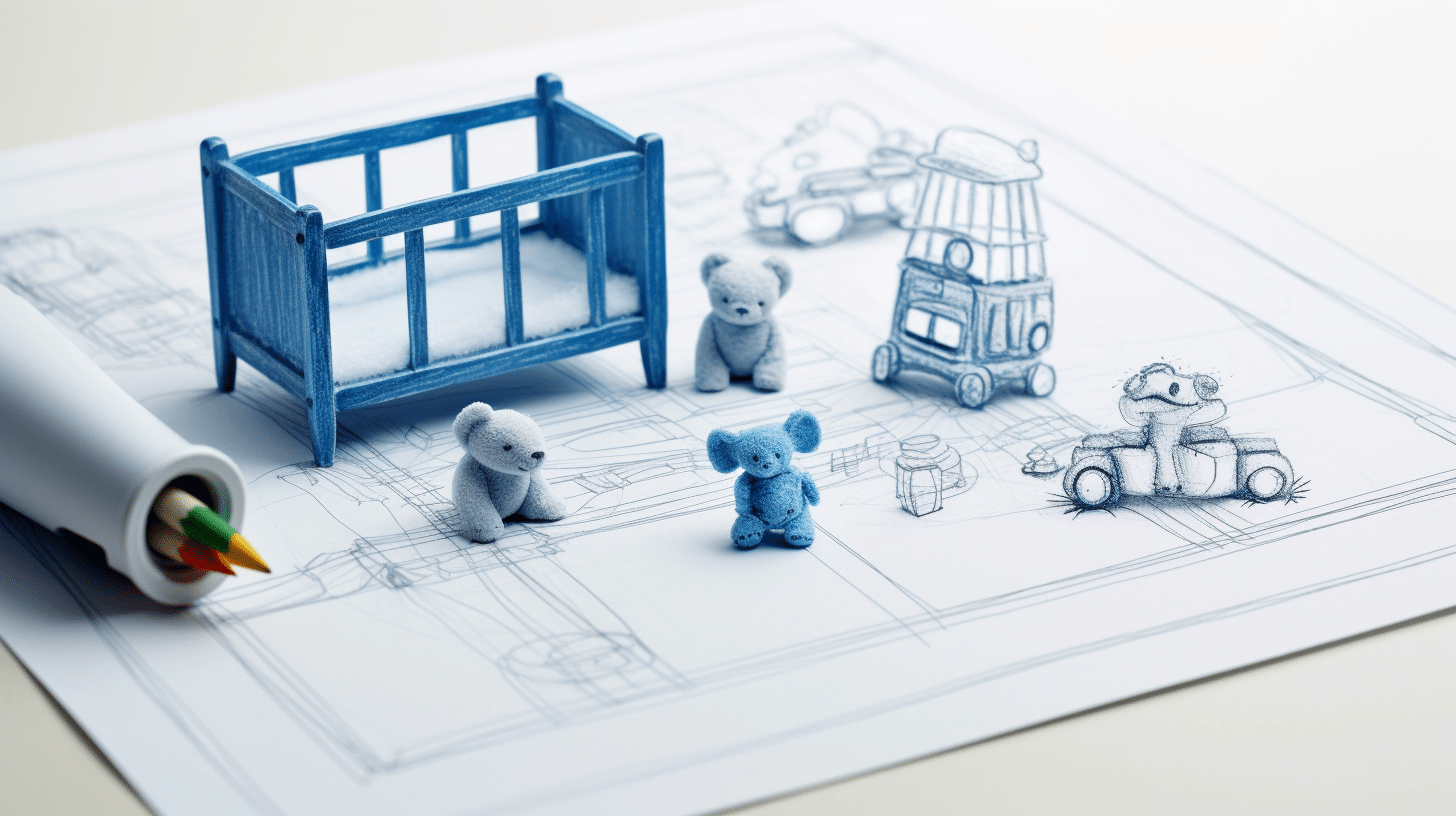Manufacturing Specification

At D2M, we believe in empowering your vision and propelling your innovative ideas from concept to market with precision and efficiency. One crucial step in this journey is developing a manufacturing specification, and we have crafted a streamlined approach tailored just for you.
Our Process
Preparation & Initial Data Collection
The first step in the manufacturing specification process focuses on gathering comprehensive details about the intended product, whether it’s apparel or a hardgoods product. This involves:
- Client Consultation: Begin with an in-depth discussion with you to understand your vision, needs, and requirements for the product. These may have changed slightly since the beginning of the project or may have been influenced by earlier stages of work such as market insights or testing a prototype. This consultation provides insight into resulting changes and clarity as to your expectations regarding the manufactured product. Batch sizes, quality expectations, durability, warranty and product life will all be part of these discussions.
- Material & Component Identification: Based on the analysis, identify potential materials or components that could be suitable for the product. For apparel, this could involve selecting fabric types, threads, zip, and more. For hardgoods, this might involve determining the best materials for durability, aesthetics, and functionality or reviewing options for surface finishes.
With these foundational details gathered, it’s now about structuring this data in a format conducive to informing a factory about your product concisely and clearly.
Drafting the Manufacturing Specification
This stage is dedicated to translating the gathered data into a comprehensive document that manufacturers can understand and utilise effectively and efficiently:
- Bill of Materials (BOM): A crucial component, the BOM lists out every material, component, and accessory required to produce the product. This includes quantities, specifications, and possible alternatives. For apparel, it would enumerate fabrics, buttons, threads, and embellishments, while for hardgoods, it might detail parts, screws, adhesives, etc.
- Technical Details: Generate clear and concise technical sketches that depict the product from various angles. These sketches, often created using tools like Adobe Illustrator for apparel or CAD software for hardgoods, serve as visual blueprints for the manufacturers.
- Assembly & Construction: Describe the steps, techniques, and standards expected in the assembly process. This may cover sewing instructions for garments or exploded views for products made from hard materials like metals or plastics. Instructions are laid out logically, ensuring clarity and ease of replication.
- Quality & Performance Metrics: Set the benchmarks for product quality and performance. By establishing these standards early, it ensures that manufacturers understand the expectations and can align their processes accordingly. This is particularly critical for products that have to adhere to certain standards or pass certain testing requirements. (If extensive this may be a separate piece of work conduced by a QC and QA specialist in our network.)
Review, Refinement, & Finalisation
The concluding step ensures that the manufacturing specification is complete, accurate, and ready for the manufacturers:
- Internal Review: Before presenting the document to the client, conduct an internal review. Other senior designers within D2M will provide feedback, ensuring that the specification aligns with industry best practices and standards.
- Client Review: Present the draft specification to you for your feedback. This collaborative approach ensures that the document aligns with your vision and expectations.
- Integration of Feedback: Revise the specification based on feedback received, optimising it for accuracy and clarity.
- Finalisation & Delivery: Once all refinements are integrated and the specification is deemed comprehensive, finalise the document. Convert it into a professional, accessible PDF format, ensuring it’s ready for manufacturers to provide quotes effectively.
Precision and Clarity in Manufacturing Communication
In the intricate process of product manufacturing, critical details must be clarified to ensure the end product is as envisioned. D2M’s Manufacturing Specification Service acts as the handbook, laying out the necessary information for the production process to proceed seamlessly. (inevitably there will still be challenges during the process but this document really helps to minimise these!)
One of the most recurrent challenges businesses face is the gap between a product’s conception and its execution. This discrepancy often arises from a lack of clear communication and understanding between the innovator and the manufacturer. By using a thorough manufacturing specification, D2M seeks to bridge this gap.
The detailed Bill of Materials (BOM) clarifies the main materials and components, whilst allowing flexibility on none essential items for the factory to source. This often saves significant cost and hassle as they can use their existing, reliable suppliers. Technical sketches offer visual clarity, ensuring the manufacturer knows precisely what is expected in terms of design. Essentially, this service is the difference between providing a manufacturer with a vague outline and offering them a clear and concise document that outlines the critical elements of the project. With D2M’s specifications in hand, manufacturers can avoid costly mistakes, misinterpretations, or oversights. For you, this precision translates to considerable savings in time, money, and resources.

Tailored Collaboration & Flexibility for Optimisation
The product manufacturing process isn’t a one-size-fits-all operation. Each product, be it apparel or a hardgoods item, has its unique requirements, challenges, and intricacies. Recognising this, D2M’s Manufacturing Specification Service is tailored to suit the distinct needs of every product.
A particularly notable aspect of D2M’s service is the anticipation of feedback from manufacturers. While the specification document is detailed, it is not rigid. The process acknowledges the invaluable expertise that manufacturers bring to the table. Their insights, often rooted in hands-on experience and practicalities of production, can be pivotal in optimising a design for mass production. By actively anticipating and integrating this feedback, the service ensures the resulting product is not only aligned with the client’s vision but is also attuned to the realities of large-scale manufacturing.
This approach safeguards clients against potential pitfalls or oversights. It acknowledges that while the theoretical design might be impeccable, the practical execution might necessitate adjustments. By facilitating this collaborative feedback loop, D2M ensures clients get a product that’s both visionary and viable.


Risk Mitigation
Product development is invariably a substantial investment. Entrepreneurs and businesses pour in not just finances, but also time, hopes, and aspirations. Given the stakes, ensuring this investment yields dividends is paramount. D2M’s Manufacturing Specification Service is pivotal in this risk mitigation.
Every detail, from the choice of materials to the quality benchmarks, is meticulously outlined. Such a comprehensive specification significantly reduces the likelihood of manufacturing errors or oversights. By defining the standards and expectations upfront, businesses can be assured of a consistent product quality. This consistency is crucial in building and maintaining a brand’s reputation in the market.
Moreover, by setting clear standards and expectations, D2M empowers clients during negotiations with manufacturers. Armed with a robust specification, businesses can ensure they’re getting the best value for their investment, without compromising on product quality or integrity.
Lastly, the note on flexibility in sourcing materials or components underscores D2M’s commitment to ensuring the project’s success. By identifying potential bottlenecks or challenges early in the process, the service ensures that clients aren’t caught off-guard later in the production cycle. This proactive approach is pivotal in ensuring the project stays on track, on budget, and meets its intended timeline.

FAQs
What is a manufacturing specification?
A manufacturing specification is a comprehensive document that provides detailed instructions for the production of a product, whether it’s hard goods (like tools, handheld electronic products, or kitchen utensils) or textiles (such as garments or bags). For hard goods, the specification often includes details about materials, dimensions, tolerances, assembly instructions, and any other relevant data to ensure the product is made to the correct standards. For textiles, it’s akin to a “tech pack” and encompasses information on fabric types, stitching methods, sizing dimensions, colorways, and placement of labels or graphics.
How much does a manufacturing specification cost?
The cost of a manufacturing specification varies based on several factors: the complexity of the product, the amount of research required, the expertise of the company or professional creating it, and the industry’s standards. A more intricate product with multiple components or advanced materials will typically result in a higher cost than a simpler one. While D2M offers competitive pricing and expert services, it’s best to consult directly for an accurate quote tailored to your specific project. (Expect to pay between £1500 and £4500 for a basic manufacturing specification)
Why is a manufacturing specification important?
A manufacturing specification is pivotal for several reasons:
- Precision & Consistency: It ensures that every unit of the product is made to the exact standards and maintains quality across batches.
- Effective Communication: Manufacturers, especially when located in different regions or countries, need a clear and universal set of guidelines. A well-defined specification bridges any potential communication gaps.
- Cost Efficiency: By clearly stating requirements, it reduces the chances of errors in production, which can lead to costly reworks or recalls.
- Compliance & Safety: It ensures products meet industry standards, regulatory requirements, and safety guidelines.
What details are included in a manufacturing specification?
Technically, a manufacturing specification can be updated even after production has commenced. However, making changes mid-production can lead to complications, additional costs, potential delays, and inconsistencies in the finished product. It’s always best to finalise specifications before production starts. If changes are imperative, they should be communicated immediately to the manufacturer, and all potential implications should be thoroughly considered. Equally this document is often more useful if it is constantly updated and improved as challenges are overcome in production or the product undergoes iterative improvement for cost effectiveness, reliability and durability.
Can I update a manufacturing specification after production starts?
Technically, a manufacturing specification can be updated even after production has commenced. However, making changes mid-production can lead to complications, additional costs, potential delays, and inconsistencies in the finished product. It’s always best to finalise specifications before production starts. If changes are imperative, they should be communicated immediately to the manufacturer, and all potential implications should be thoroughly considered. Equally this document is often more useful if it is constantly updated and improved as challenges are overcome in production or the product undergoes iterative improvement for cost effectiveness, reliability and durability.
Overview of Manufacturing Specification
What exactly is a Manufacturing Specification? Whether you’re bringing to life a tangible hard good or a unique textile-based product, a manufacturing specification acts as your product’s DNA. With hard goods, this translates to a comprehensive outline detailing aspects like materials, assembly instructions, tolerances, and more. On the other hand, for textile innovations, it serves as a blueprint—akin to a tech pack—providing insights into fabric types, stitching techniques, functional requirements, and beyond.
Understanding the Value of a Basic Manufacturing Specification
While we offer a detailed, exhaustive specification service, we understand that not every project demands such intricate granularity. Often, every component drawing, and all potential dimensions aren’t necessary. Why? Because seasoned manufacturers often rely on a provided CAD model or the textile prototype.
Enter our Basic Manufacturing Specification service—an agile, cost-effective, yet comprehensive solution that ensures all the vital components of your product are meticulously outlined and communicated. It’s tailored for projects that require an effective balance between precision and practicality.
Here’s Why This Service is Crucial for Your Project:
- Precision & Consistency: Every product iteration should reflect your vision. Our specification ensures that your product is replicated accurately across batches, maintaining a consistent quality that your consumers will appreciate.
- Clarity in Communication: With a myriad of moving parts in product development, clear guidelines are paramount. Our specification acts as a universal language, bridging potential communication gaps with manufacturers—whether they’re local or overseas.
- Cost Efficiency: Ambiguities can be costly. By clearly delineating requirements, we minimize the chances of production errors, which might lead to expensive reworks or revisions.
- Ensuring Compliance & Safety: More than just a guide, our specifications are an assurance that your product aligns with industry benchmarks, safety guidelines, and regulatory requirements.
Crafting Your Project’s Manufacturing Specification – What’s Included?
Beyond the essentials of the Bill of Materials (BOM) and assembly guidelines, we delve into tolerances, material properties, and relevant testing methods. For textile conceptions, anticipate detailed notes on fabric type, stitching specifics, label placements, and colour codes, among others. But remember, this service encapsulates the essence without delving into overwhelming and unnecessary granularity that would cost an inordinately large amount to produce.
Flexibility and Updates
We acknowledge that visions evolve and changes might be necessary. While our specification provides a robust foundation, we advise finalising details before production to ensure cost-effectiveness and consistency. If tweaks are imperative after production initiation, we stand ready to assist, ensuring that any updates are communicated promptly and all implications considered.
Why Opt for a Basic Specification Over a Detailed One?
Simplicity often yields brilliance. While a detailed specification offers an exhaustive overview, it often delves into nuances that, for many projects, might be superfluous. Our basic service is designed to give you the necessary toolkit to communicate your vision without overburdening you (or the manufacturer) with excessive details. It’s a pragmatic approach for those who need essential details accurately communicated, without the exhaustive (and often more expensive) minutiae of every conceivable dimension and drawing.
In essence, at D2M, our Basic Manufacturing Specification service is centered around you—your needs, your vision, and your product’s success. We’re here to ensure your project, regardless of its complexity, has a well-defined roadmap, balancing precision with practicality, guiding it seamlessly from conception to realisation.